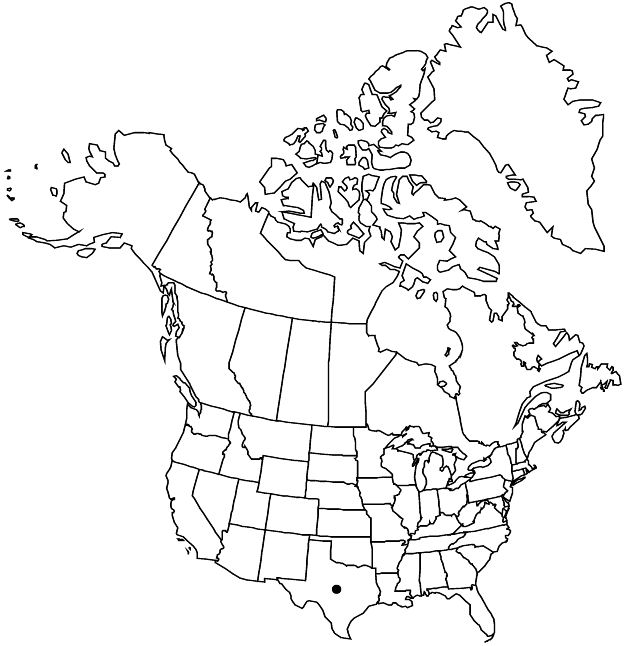Linum lundellii
Sida 8: 184, fig. 4c. 1979.
Herbs, annual, 10–40 cm, glabrate. Stems spreading to erect, few-branched. Leaves alternate, spreading; stipular glands moderately developed at proximal nodes, absent on distal nodes; blade linear, 5–30 × 0.5–1.5 mm, margins entire, not ciliate, apex acute. Inflorescences panicles. Pedicels 5–13 mm. Flowers: sepals deciduous, linear-lanceolate to lanceolate, 4–12 mm, margins narrowly scarious, glandular-toothed, apex acute to acuminate; petals yellow to orange salmon, faintly maroon banded near base, obcordate, 7–12 mm; stamens 4–5 mm; anthers 1–1.5 mm; staminodia absent; styles connate nearly to apex, 3–4 mm; stigmas dark, capitate. Capsules ovoid, 3.3–4 × 2.6–3.1 mm, apex obtuse, dehiscing into 5, 2-seeded segments, segments persistent on plant, false septa complete, proximal part membranaceous, not terminating in loose fringe, distal part cartilaginous, margins not ciliate. Seeds 2.5–2.7 × 1.1 mm. 2n = 30.
Phenology: Flowering Feb–Apr.
Habitat: Sandy loam in arroyos, gravelly hillsides, mesquite scrub woodlands.
Elevation: 0–100 m.
Distribution

Tex., Mexico (Nuevo León, Tamaulipas).
Discussion
Linum lundellii occurs in southern Texas and adjacent Tamaulipas (the collection from Nuevo León, Mueller 470, TEX, made at 2400 m, may be misidentified); it can be distinguished from other species by its relatively very short styles. C. M. Rogers (1968) identified a variable population of yellow-flowered plants that he included in L. berlandieri var. filifloium (then treated as L. rigidum var. filifolium). As a result of subsequent study of these plants, he concluded that L. lundellii and L. elongatum should be recognized as separate species. Rogers (1979) compared garden-grown plants of these three taxa and observed that the anthers of L. lundellii are at the same level as the stigmas at anthesis and that pollen had already been deposited on stigmas when the flowers opened, whereas styles of L. berlandieri var. filifolium and L. elongatum are much longer than the stamens and pollen is not shed before anthesis.
Selected References
None.